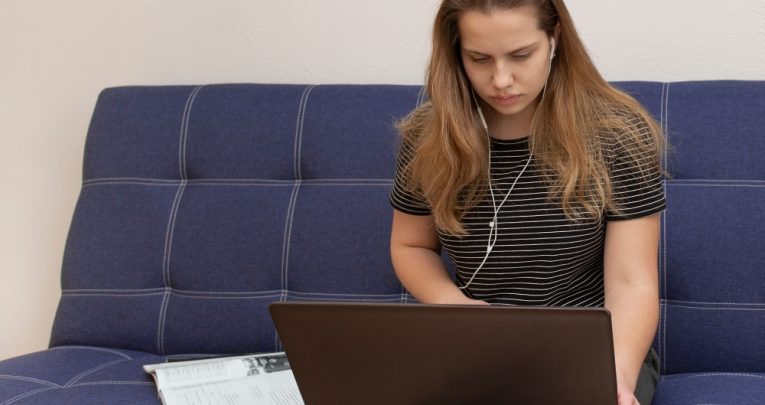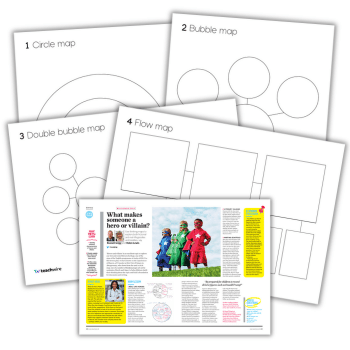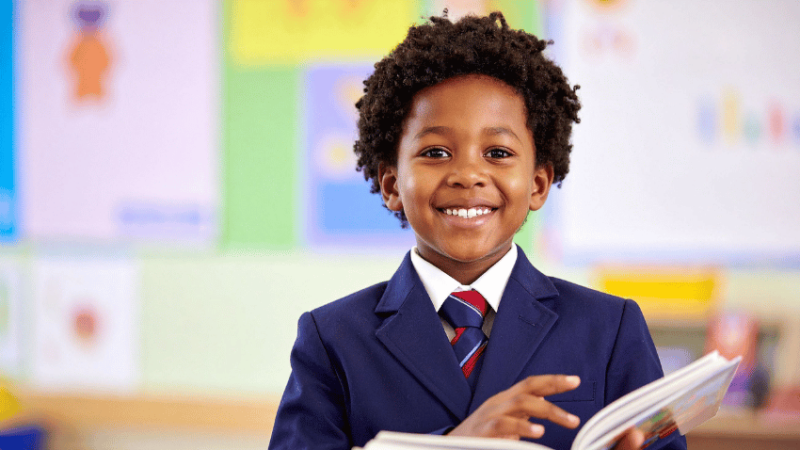“Our goal has been to make things feel as close to normalcy as possible”

Mark Wilson reflects on how Riddlesdown Collegiate rapidly adjusted its approach to educating students amid the COVID-19 emergency…

- by Mark Wilson

‘Planning for an emergency situation’ almost sounds like a contradiction in terms. By their very nature, emergencies are characterised by uncertainty and unexpected change.
Perhaps more than most organisations, schools are highly sensitive to the risks posed by fire, power cuts, severe injuries, and indeed widespread illness – yet the sheer scale of the coronavirus crisis has tested all such plans to their very limits.
At Riddlesdown Collegiate, we’re fortunate to have been led by an extremely prudent leadership team. Around a week before the shutdown of schools was announced by the government, every member of the school’s teaching staff had been given a CPD session on remote teaching. Clear expectations were communicated, along with examples of best practice, and support was provided on how to make effective use of Google Classroom. Parents, staff and students were all subsequently given clear and consistent daily updates on the situation. These pre-emptive actions helped make teaching from home a much less stressful experience for us than might have been expected, given the circumstances.
A ‘normal school day’
The chief challenge for us hasn’t been asking staff to continue performing in their roles from a different location, but rather preventing students from becoming too used to being a different learning environment. It’s only natural that most students will find it harder to learn at home, or find the motivation to jump out of bed when the usual time pressures simply aren’t there.
It was ultimately decided that staff should schedule all lessons in the manner of a normal school day, with period 1’s lesson going live at 9am, followed by period 2 at 9.50am and so on. Lesson changeovers would trigger email alerts for students, which dovetailed with messages that parents and guardians received in relation to specific Google Classroom lessons, so that they could help with monitoring homework, thus giving everyone a chance to keep students working to a set timetable. The mental health benefits of establishing and following clear routines are widely understood across a range of sectors and disciplines, from mental health professionals to astronauts.
However, the school’s response has adapted over time in response to parental and student feedback. We’ve heard from some parents that students would be partway through a lesson when they’d suddenly receive a separate task pop-up from another teacher. At other times, gaps between activities could be too large, with lengthy waits between tasks, making those myriad distractions available to many students at home all the more appealing.
Then there are the additional challenges being faced by parents, many of whom may well be working from home themselves, or even taking care of other children, and who might struggle with cajoling students into engaging with the work they’ve been set in an academic frame of mind.
Independent learning expectations
Whilst I still can’t recommend the presence of a schedule enough, our approach after the Easter holidays will be to set all of the day’s lessons to launch at the same time of 9:00. The thinking behind this is that parents will only need to see what’s been set for their child once per day, and that students can decide for themselves what to complete first and in what order.
The opportunities and challenges that come with such expectations of independent learning are fine for some students – arguably those in wealthier households in particular, who might have numerous devices to work on and a well-established academic drive. I know of some students belonging to this group who are finishing up their work by 2pm, prompting their parents to ask for more work to be set. I also know of other families who have asked me privately to not set as much work – often because the students in question go ‘all in’ when it comes to written work and end up producing far more detail than what’s needed. Then there’s our ever-present concern for those students less inclined to see the benefits of education, or whose parents can’t be there to police them as teachers can.
The solution here has been to instruct all tutors to contact students and parents once a week, with senior tutors contacting looked after and Pupil Premium students. Reaching out to families in this way to discuss any concerns or issues has helped us tackle various immediate problems, and sometimes uncover hitherto unknown issues that existed before the shutdown.
Crucially, students can also get to hear a familiar voice; we’ll talk to them as their teachers in order to allay their worries, discuss how their environment can be made more comfortable and productive for them, or to simply provide them with a sympathetic ear that’s ready to listen. Talking to them in a mature and professional way gives them a sense of routine and regular interaction with someone they associate with education.
Plan of action
In common with most schools, our cohort includes children of key workers who have been offered the chance to continue learning in school, with a core group of SLTs and LSAs on hand to provide support and supervision. Those students with limited or no online access have been issued with learning packs containing two weeks’ worth of lessons printed off. We’ve therefore been following an organised plan of action, but have found the teamwork demonstrated by staff across the school to be extremely useful in plugging holes in learning as they’ve appeared.
I’ve personally find it challenging to handle the sheer number of work submissions. The independent learning expectations we’ve set for our students have been well met by the vast majority, with the result that around 150 pieces of work are being submitted for me to review each day via Google Classroom or over email.
It would be unrealistic to expect all that to be deep marked, so I’ve set out which particular tasks I’ll be marking in that lesson’s materials – often via PowerPoint file with a supporting video recorded the day before, to help guide students through and enable them to quickly check if they’ve got the right answers. If I notice that a student hasn’t submitted any work for three lessons then I’ll contact their tutor; similarly, I have colleagues who’ll contact me if a member of their tutor group hasn’t met their expectations too.
New incentives
We’ve also found ourselves having to develop a new type of incentive for our students. Our school’s points system was previously used for both positive and negative reinforcement, but without the prospect of detentions or potential rewards in the form of recognition at assemblies, certificates, and badges, a slightly different approach is needed. I’ve chosen to send out postcards with literary quotes on for those students demonstrating the best levels of engagement each week.
Throughout this whole experience, our goal has always been to make it feel as close to normalcy as possible. A handwritten note received by a student from their tutor isn’t exactly high-tech, but it’s an example of the personal interactions that many students will be missing deeply right now. We can devise timetables and plan content for lessons that replicates what students would have experienced in the classroom. We can maintain the same high standards of collaboration within departments and across the whole school. But what is unavoidably abnormal is that lack of personal interaction between students and teachers.
The approaches we adopt now, when calling home and talking to pupils, may well be the most important decisions we make in terms of how well students are able to develop their independence and resilience in difficult and extraordinary times.
Mark Wilson is an English teacher and Y7 form tutor at Riddlesdown Collegiate










